Guide to Engagement Ring Terminology
November 15th, 2022
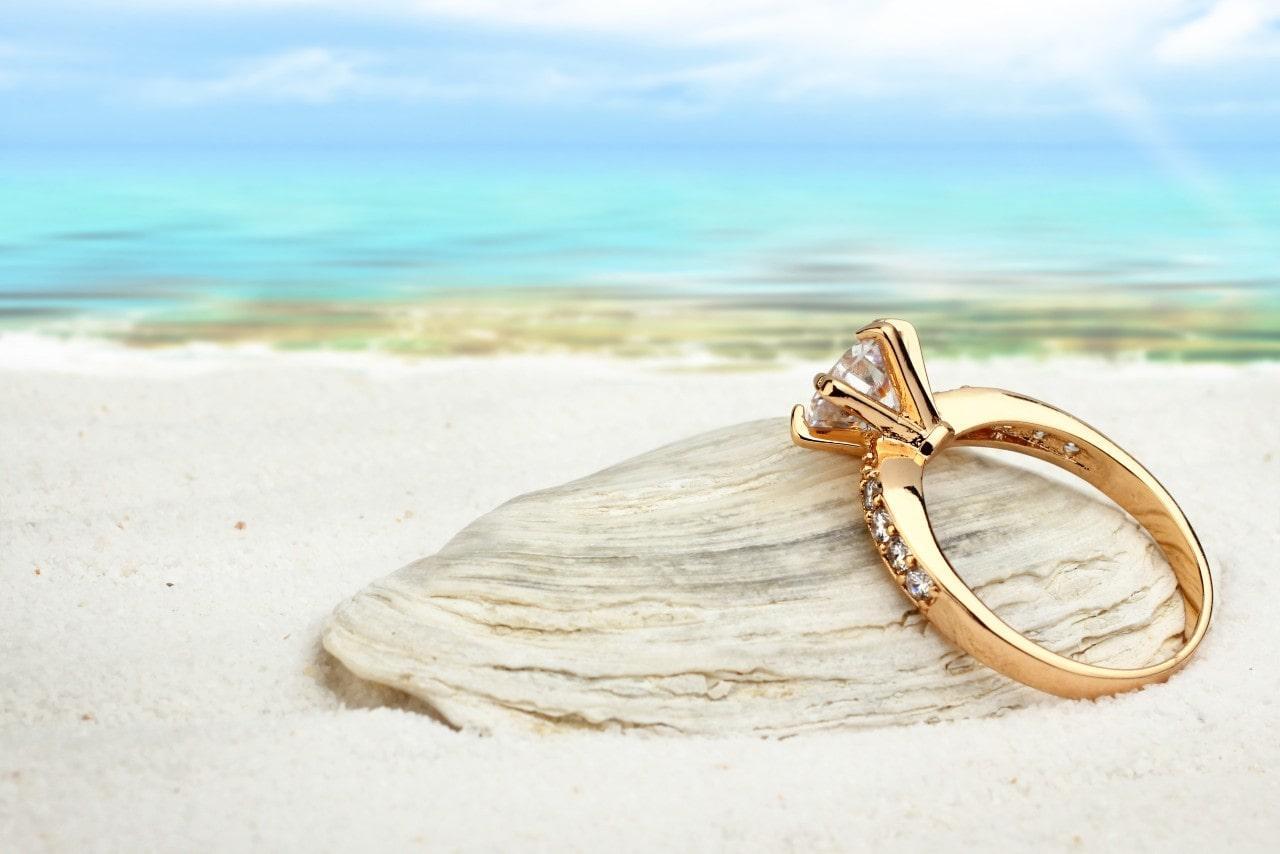
Being proposed to with an engagement ring is one of the most important moments in one’s life. You want to make sure you choose the right ring for your significant other, especially since they are made to be worn forever. From the research to the jewelry store visits, finding the right one is a rewarding yet challenging experience. Buying an engagement ring is an adventure, at the Wedding Ring Shop, we do everything we can to make the adventure romantic and unforgettable.
During your shopping journey, it is essential to know all the terms that jewelers, goldsmiths, and gemologists use. This centuries-old art form takes from a large body of knowledge and expertise. Some terms are scientific and technical, while others are more culturally oriented. Regardless, you should know all of your options when purchasing an engagement ring. This list should inform you of all the terms and definitions jewelers use. However, don’t hesitate to call our Honolulu jewelry store to talk more in depth about the parts that make up your engagement ring.
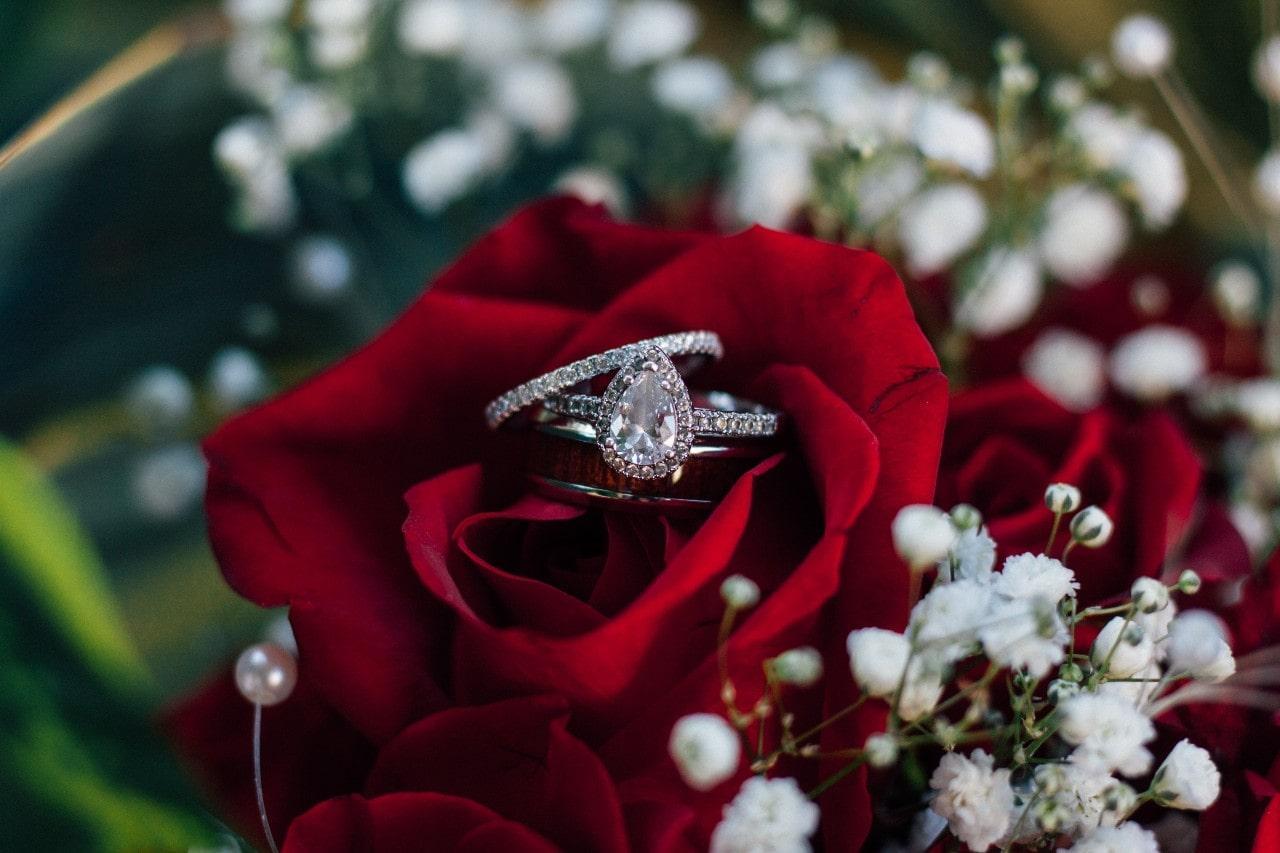
Diamond Terms
Blemish: Visible flaws on a polished diamond’s surface, including scratches, abrasions, and nicks.
Branded diamond/cut: Patented cutting style, such as Hearts On Fire’s “Most Perfectly Cut Diamond.”
Brilliant cut: Diamond cut with a plethora of facets used to facilitate light reflection. The round cut is the most classic and popular.
Brilliance: Brightness and radiance emitted from a diamond’s center.
Four C’s: Four diamond grading guidelines used by Gemological Institute of America
- Carat (c or ct): The weight of a gemstone, not to be confused with karats. A carat is equal to 200 milligrams.
- Clarity: Lack of internal or external flaws, sometimes called “inclusions” or “blemishes”
- Color: The absence of color in a diamond, ranges from “D” (colorless) to “Z” (yellow or brown.)
- Cut: Accuracy and precision that styles the stone into certain guidelines. The cut has less to do with the physical shape and more to do with how the facets reflect light.
Crown: The diamond’s facets around the top. Located above the girdle.
Culet: The flat bottom of a diamond where the lower facets meet. Sometimes used to give the diamond some more structure.
Eye Clean: Describes gemstones with no visible flaws. Some flaws may still be found under a magnifying glass.
Face/Table Up: When the diamond’s crown and table face towards the viewer, as in most engagement rings.
Face/Table Down: The inverse of face/table up, when the diamond’s pavilion is positioned outward.
Facet: Polished sides cut into a diamond.
Fancy Shape: Anything other than a round diamond, such as emerald, oval, or pear-shaped diamonds.
Fire: Color flashes from a polished diamond.
Flawless: Diamonds lacking any flaws, even when viewed under a magnifying glass.
Fluorescence: Light visible when viewed under ultraviolet (UV) light.
Girdle: A diamond’s outer edge, determines the silhouette.
Inclusion: Flaws inside a polished diamond, can be seen through a stone’s facets.
Kimberley Process: Certification that ensures diamonds are ethically sourced and conflict-free.
Laboratory-grown: Diamonds created in a laboratory, as compared to natural-mined.
Loupe: Magnifying glass used by gemologists.
Melee: Trade term describing tiny diamonds that weigh 0.2 carats. They are often used in side stone settings.
Pavilion: Facets below the diamond’s girdle.
Plot: A plot is a diagram that shows the clarity of a diamond. Typically found with a diamond certification, a plot diagram shows characteristics such as diamond inclusions, facet arrangements, and blemishes.
Princess Cut: Marketing and colloquial term for “square modified brilliant diamond.” It has a square shape which, when viewed from the side, resembles an inverted pyramid.
Proportions: Relationship between angles and measurements of a diamond, such as the width of a pear cut diamond.
Scintillation: The play of light and shadow in a diamond when rocked back and forth.
Shape: A diamond’s silhouette, such as those found in oval, cushion, or round cut diamonds.
Simulants: Alternative gemstones used to mimic diamonds, such as cubic zirconia.
Table: The outermost flat surface on a cut.
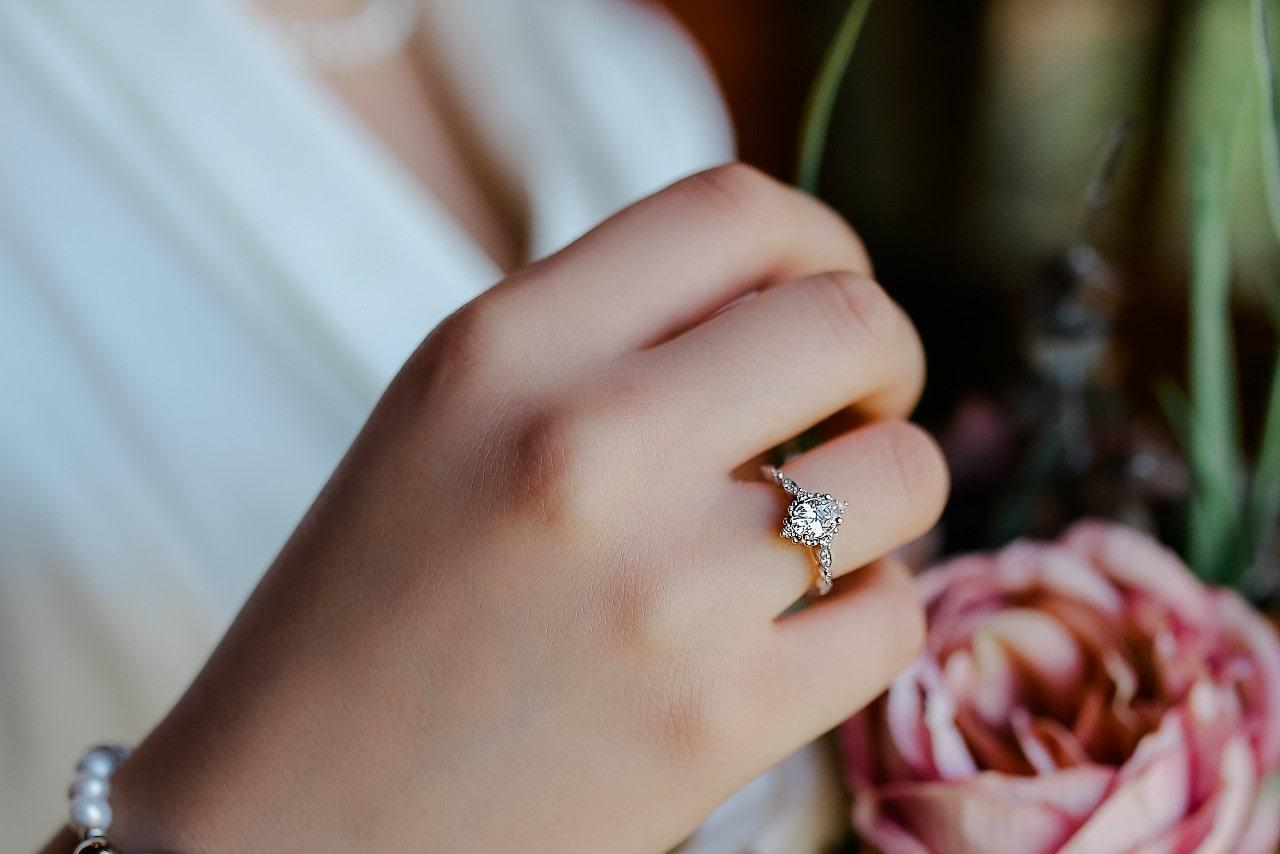
Diamond Setting Terms:
Accent stones: Small diamonds set in the band beside the center stone.
Bezel: Setting for a diamond that surrounds the stone in the band’s precious metal.
Cathedral: An engagement ring setting that features 2 arches that slope up either side of the center stone.
Channel: This setting is usually used as side accents or on wedding bands. Channels set a line of diamonds in a crease in the band, appearing as if it's between two strips of metal.
Halo: A layer of diamonds that surrounds the center stone.
- Hidden halo: A variation wherein the center stone rests on the halo, making it exclusively visible from the side profile.
Pavé: Commonly used as an accent, pavé is a line of diamonds. It is named after the French word for cobblestones. There are a few varieties of pavé.
- French Pavé: Diamonds are set in v-shaped grooves cut into the band.
- Micropavé: Tiny diamond paves, usually stacked on top of each other for a spectacular display.
Three Stone: The center diamond is flanked by two accessory stones, usually other diamonds. They can be in all varieties of cuts and shapes.

Engagement Ring Terms
Band: The precious metal circle in which the diamonds are set.
Center stone: Diamond located at the center of the engagement ring. If there are other stones in the ring, the center stone is almost always the largest and most prominent.
Gallery: Center stone and its accompanying side stones, if any.
Millgrain: Tiny metal beading is used to create a more versatile silhouette, commonly used in vintage rings.
Profile: The silhouette or shape of a ring, especially when viewed from certain angles.
Prong: Setting for gemstones where the jewel is held secure via small metal spikes or bars. It allows the jewel to be viewed from all angles and is, by far, the most common gemstone setting.
Setting: Refers to how the center and accessory diamonds are set or mounted in a band.
Shank: This is the front-facing part of the ring that holds the center stone, as well as other details and add-ons. There are many varieties of shanks that instill a distinctive look into the piece.
Solitaire: Engagement ring that lacks accessory or accent diamonds.
Side stone: Accent or accessory diamonds set in the shank surrounding the center stone.
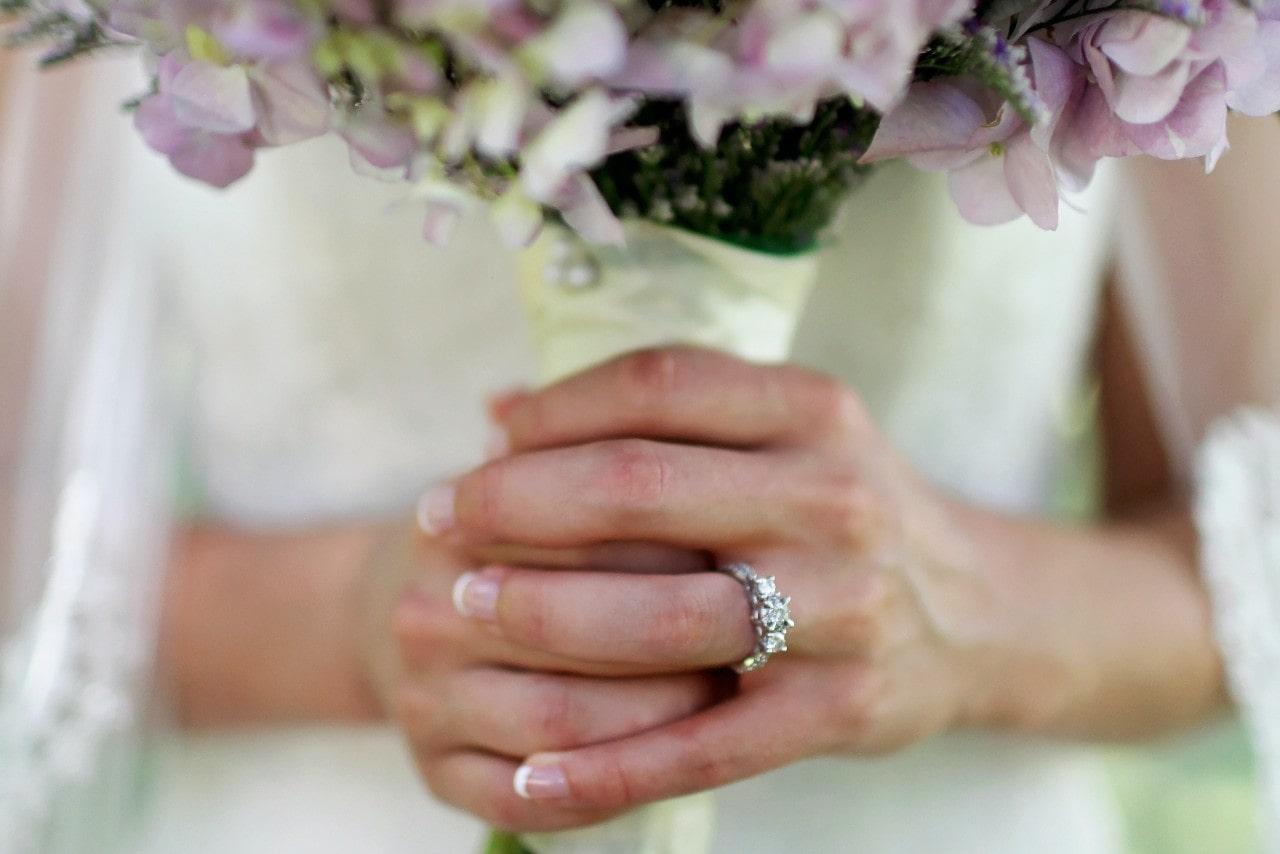
Precious Metal Terms
Alloy: A material made through the combination of multiple hard metals, such as copper, silver, or gold.
Copper: While not often used by itself in modern fine jewelry, it is frequently used to strengthen other metals. Copper is hypoallergenic but tarnishes easily.
Gold: Naturally yellow, this element is the base of many precious metals used in jewelry.
- Rose Gold: Its red-pink hue comes from the use of copper in the alloy.
- White Gold: An alloy made with gold and other metals such as palladium and copper. Eventually coated with rhodium.
- Yellow Gold: While gold is inherently this color, this term separates it from other alloys.
Karat: Measurement used to describe the purity of gold. For example, 24k gold is pure. Not to be confused with carats (used for diamonds) or carrots (used for snacks). Sometimes abbreviated as kt.
Nickel: Another metal used to reinforce precious metals, nickel isn’t hypoallergenic like copper is. It can cause allergic reactions in some people.
Platinum: Among the most valuable and luxurious materials, platinum is rarely made into an alloy due to its natural strength.
Rhodium: Sometimes used to add a radiant sparkle to a piece and is frequently used in white gold. Jewelry with rhodium plating should be taken to a jeweler to be redipped, or else the gold’s natural yellow may shine through.
Sterling Silver: An alloy made with 92.5% fine silver and 7.5% other metals, especially copper. Not often used in engagement rings.
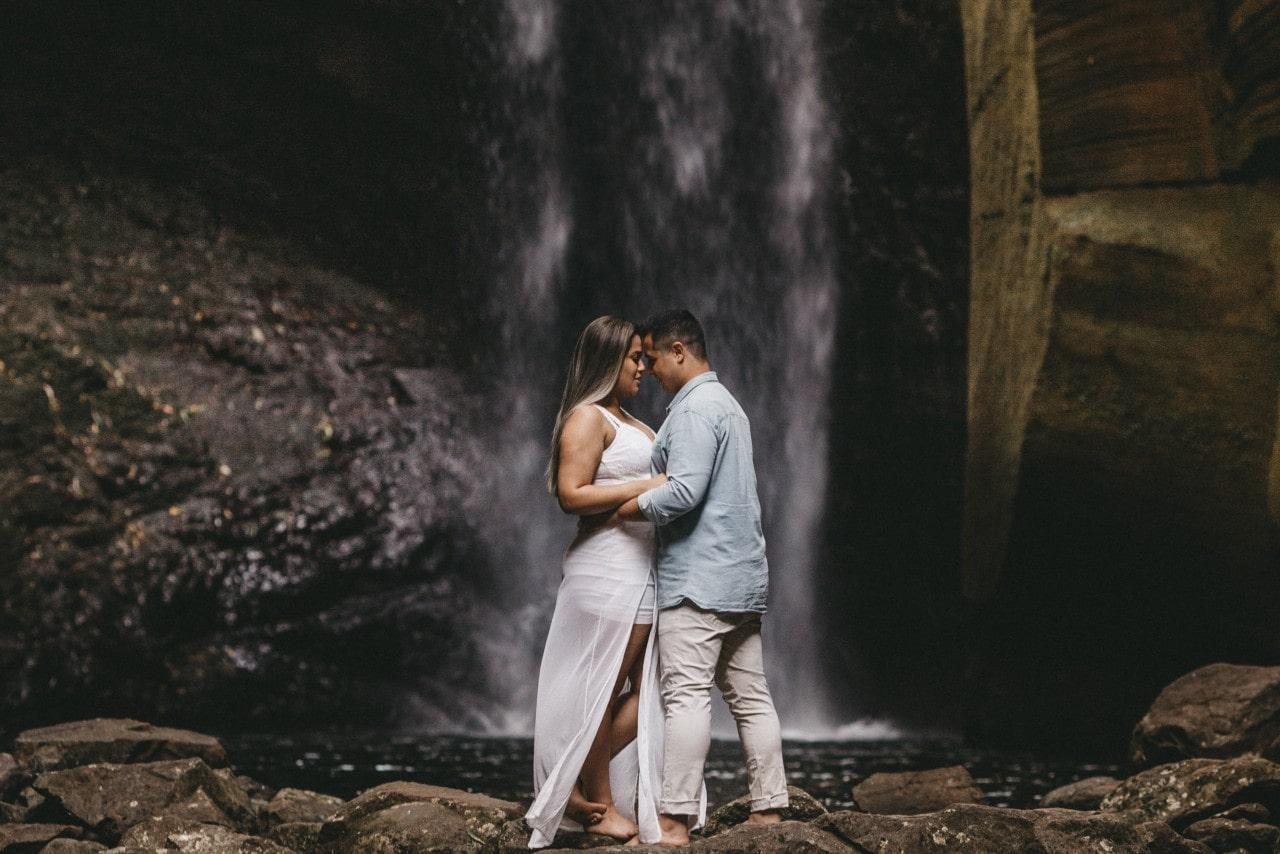
Find Your Engagement Ring at the Wedding Ring Shop
At The Wedding Ring Shop, you will find a boundless variety of engagement rings. Our marvelous selection showcases many of today’s top designer brands, ensuring that every visitor finds their dream piece in our Honolulu jewelry store. We also offer diamonds perfectly suited to be the center stone that represents your romance. At our store, we only employ the most highly skilled experts so as to guarantee that our entire inventory is of peerless quality. Contact us on our website to schedule a personalized appointment, or call us anytime at (808) 945-7766 for all the answers to any of your questions.
 Schedule a Visit
Schedule a Visit 
